
The Huawei Ascend P7 was announced earlier this year promising to redefine “smartphone design, camera experience, and connectivity, to provide people with an unprecedented mobile experience.” Here at Ausdroid we were offered a P7 to review so we decided to find out whether Huawei’s ambitions come to fruition with this phone.
- Form factor is relatively small with a decent sized screen
- Phone feels extremely solid and very well built
- Price is attractive when compared with other flagships
- Possibility to extend memory with microsd card
- The phone can lag at times
- Only 16GB internal memory (games etc can only be installed on internal memory)
- Huawei launcher is laggy, terrible design and has bugs
Packaging/In The Box
Included in the box are the phone (who would have thought right?), a standard microUSB cable, a headset/headphone which sounded just ok, and a US wall charger (which I am assuming will be replaced with an AU charger by the time it is released here.
Hardware
It seems that most flagship phones coming out these days are over the 5-inch barrier. Whether that is a bad or good thing is up to you the user, but there is definitely a faction out there who prefer a smaller phone that sits in the hand easily and is relatively easy to use without performing Olympic-level hand gymnastics. This phone could quite possibly be for them. The display itself comes in at spot on 5-inches. This could still be considered big by some by the form factor of the phone is a nice change from the large phablet-size phones I have been using lately.
The phone is 139.8 x 68.8 x 6.5 mm which is very close to a Nexus 5 size which could have some bearing on my admiration for it’s size. The difference is that for the P7 Huawei have chosen a design more alike to a Sony Xperia Z2 than a Nexus 5. It has relatively abrupt corners in all directions and is a very blocky phone. Around the sides of the device is a metal ring aiding in its similarities to the Sony devices. While it doesn’t feel as nice in the hand due to its lack of curvature the phone sits comfortably enough to allow one handed navigation. Maybe it’s due to only being 6.5mm thin but either way the form factor is perfect for me in my use.
The front of the device does not have any hardware buttons, something I am very happy with. The simple black look from the front is cheapened slightly by the appearance of a Huawei name down the bottom of the device. With the name already on the back I am not sure they needed it on the front. Not being a household name maybe they did but I don’t like it and maybe they could have made it a bit classier.
The bottom of the device has the microUSB charger hole, as do most phones. One of our editors here, Jason, will be happy to know the port is back to being up the “right” way as he puts it. Not an issue either way. You get used to whichever way the company puts it.
The left side of the device is empty. Nothing. No volume keys as per normal. No sdcard slot and no sim card slot. What this means is the right side is far too packed for my liking. The right side of the device has the sim slot, the sdcard slot, the power button and the volume rocker. This results in a very crowded surface and thus I found myself often hitting the power button when I meant to be hitting the volume down button. Not a very ergonomic design by Huawei in my opinion. The buttons themselves are very solid and the power button is so similar to the Z2 power button it is only missing the Sony icon.
The top of the device is fairly sparse but does house the headphone jack as well as a noise cancelling microphone.
The back of the device is once again similar to the Sony Z2 in that is has a glass back which seems like it could be prone to breaking but it looks really stylish. Also on the back is the Huawei icon, the 13MP camera and LED flash, and the single mono speaker.
Huawei have decided to run the device with a processor developed in-house, a 1.8GHz Quad-Core Cortex-A9 HiSilicon Kirin 910T CPU with Mali 450 GPU. Sounds impressive on paper but in real life it didn’t seem to cut the mustard when it came to intensive tasks. It houses 2GB RAM which is no slouch as the 2014 iteration of the Moto X has the same.
The Ascend P7 also has a microSD slot which is great as the included internal memory is only 16GB. 16GB sounds adequate when an SD card slot is included but remember that apps and games can only be installed on the main memory, not the SD card. It is definitely a problem when you think that Asphalt 7 and Modern Combat 5 take up 1GB each. Add a few more games, take away a few more gig for the ROM and that 16GB is going to fill up very quickly. There is no excuse in my opinion for releasing a phone with such little storage these days. Huawei are not the only company doing it but just because others are doing it doesn’t make it right.
Build Quality
When you talk about Huawei people often think of cheap, flimsy Chinese-made phones but nowadays it seems that cheap and Chinese does not always mean flimsy. The Huawei is solid piece of kit that not only feels well made but also looks well made. The finish reminds me of the Sony Xperia Z2. Not only does it have similar button placement and appearance but also the design seems to “take inspiration” from Sony’s recent Xperia devices. This is not a problem in my opinion as the Sony Xperia devices are attractive devices.
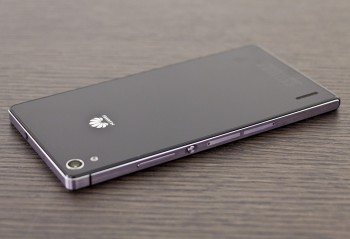 |
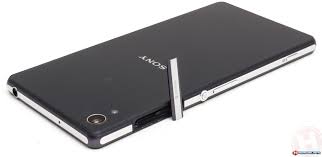 |
Screen
Huawei have hit a winner in my opinion with the size of the display on the Ascend P7. The display is an IPS LCD capacitive touchscreen, a 5-inch, 1080p display protected with Gorilla Glass 3 seems to be about the right size for me sitting nicely between a phablet and an older iDevice. The screen, while not being amazing when it came to colour reproduction it was certainly adequate and did not give me any problems. YouTube clips were still vibrant and sharp with the colours good while not blowing me away.
The display is protected by Corning Gorilla Glass 3 which seems to be par for the course these days. Nice to see Huawei didn’t cut any corners on this account, although I did my best not to test this out.
Camera
The Huawei Ascend P7 has a 13MP rear camera featuring a Sony BSI sensor and f/2.0 aperture and LED flash, with 8MP Front-Facing camera with BSI sensor and 5-pieces lens. Sounds amazing on paper and in the real world it performed well. The camera was certainly better than many other cameras you will find on phones. Colours seem a little washed out when compared with those taken with a OnePlus One. The camera is adequate for a relatively cheap phone camera. One thing the camera was was robust. I was able to snap a half decent picture in nearly every condition I threw at it. My issue was with the flash. The flash didn’t have a very long throw so if I was too far from the object it would not be illuminated by the flash.
Connectivity
The connectivity is standard for most phones released in Australia these days. HSDPA, LTE Cat 4, Bluetooth 4.0 LE, Wifi 802.11 a/b/g/n, and NFC. The LTE bands present are 1,3,7,8 and 20, with band 3, 1800Mhz, the most important for Aussies wishing to access their local LTE networks. The speeds present were just average for an LTE phone in my area but then what did I expect, for it to magically squeeze extra speed out of an already congested network.
Sound
It’s safe to say that I love my music. I may not be a true audiophile, with my ears ruined by too many live concerts over the years and my taste in music may not be for everyone (or anyone quite possibly) but the sound produced by the Huawei Ascend P7 was extremely disappointing. The sound had no base, and no depth. I like to listen to heavy metal, the heavier and louder the better.
The Ascend P7 produced possibly the worst sounding music I have heard out of an Android device for a long time. Acceptable but could have been improved so much. There was no way to improve the sound either with Huawei opting not to include a DSP or equaliser of any sort. There are many open source options available that they could have included, just as Google do. I am used to hacking my devices to make the sound better but if the independent developers on XDA can come up with DSP options (Viper4android, Extremebeats Studio, Pon 3, and Elements of fidelity to name a few), why can’t Huawei? Why not contract some of these developers to do it for them? Maybe the sound is limited by the DAC/chipset inside the phone? I really don’t know why but I do know that the sound was not at a flagship level. Even when listening through my Parrot Zik headphones, the bluetooth audio was not mind blowing. Pairing with a more portable pair of Sennheiser MM100s produced an even lower sound quality. It may be ok for the average person who doesn’t listen to much in the way of music but for me I was very disappointed.
If you were to buy this phone there are options you could use to make it sound better but I was reviewing the phone itself, not the Android Play Store apps. I tried a couple of options and they did improve the sound a bit but I would suggest that if you are an audiophile then this is not the phone for you.
The speaker on the back of the phone was also below par at a time when most manufacturers are including decent speakers in their phones, some even stereo speakers. The speaker was good enough to hear the phone ringing but when listening to music it was extremely tinny and sounded cheap.
Performance
The Huawei Ascend P7 had times where it had a long pause before it opened the app after the shortcut was tapped on. Once open the games/apps ran well. The time tested Riptide 2 played relatively smoothly. Once too many apps were open then the phone started to slow down and struggle under the workload. To me this suggests that Huawei are having issues with RAM usage. This could possibly be improved with a future update but I would suggest for a majority of Facebook-liking, Instagram-snapping, selfie-shooting users the RAM usage would not become apparent.
Although I have been a big detractor of benchmark apps I did run one on Antutu and the Ascend P7 scored 22000. As much as Antutu tried to play this up in my opinion it is not very good and is a good indication of the overall performance of the phone. It is acceptable for a low end phone but certainly a long way from the performance expected of a modern flagship.
Battery life
The battery life on the Ascend P7 was surprisingly good for a 2500mAh battery. Every day I was able to get over 13 hours of usage with screen on time over 4 hours including at least an hour of streaming music via bluetooth. This is all I need from a battery in my opinion. What is the point of more than maybe 15-16 hours? You will need to charge it before the next day anyway so I think this is a nice balance between lifespan and battery size.
Huawei have included some nice software additions to help you get more out of your battery if required. I didn’t need it but the battery saving modes that can be implemented from Huawei are a nice addition to the standard operating system. After putting so much time into this it amazes me even more the lack of attention to the sound production.
Software
The Huawei Ascend P7 runs Android version 4.4.2. When this will be updated is anyones guess as Huawei do not have a good track record when it comes to updating their devices. In saying that, while I have the review device it did receive the security update to fix the heartbleed bug but was still only running 4.4.2. Android version 4.4.3 was only released in June this year so we can’t hold it against them too much and was only a minor upgrade to the Android ecosystem. Hopefully they can work on getting the next major version 5.0 to their handsets in the near future.
The P7 is aimed at the mid range market and chances are those users of these devices tend to not worry what version of Android they are on so I can’t see the slightly outdated version of Android it runs affecting sales. What I can see affecting sales is the buggy launcher and other software on top of the bare bones of Android.
There are an absolute plethora of decent launchers on the Play Store. Many of them open source and yet this billion dollar company in Huawei manages to release a phone with a launcher that is just plain terrible and worse than at least 90 percent of the launchers on the Play Store. When they can’t just buy one, or fork one, or plain old copy one absolutely baffles me. I know of course that you can easily change the launcher but how many of the average Android users out there know this? If they did, do you think they would continue to use the Samsung launcher on their Samsungs? The launcher that manufacturers include on their devices is a bug-bear of mine but even within a basket of bad eggs this Huawei launcher stands out from the pack.
The launcher follows an iOS/MIUI idea of not having an app drawer. All well and good I suppose except Huawei decided not to add in the option to hide an app so every single app you install sits on your homescreen. You cannot change the grid size of each page so you are stuck with all those apps staring at you in the face. The navigation bar sits right over the top of the dock making the dock unsuable. This one is inexcusable. Did I mention that there wasn’t an app drawer? I do not want 179 apps sitting on my homescreens thank you very much Huawei. Did they not test the software at all before releasing it? The launcher made my experience using the device a living nightmare. After a week of attempting to use the Huawei launcher I switched over to my favourite, Nova launcher and the user experience improved out of sight. All it took was a decent launcher and this is why I don’t understand why these manufacturers do not put more time into using a decent launcher on their phones.
The rest of the software on the phone was not an unpleasant experience.
Huawei have done a good job with the theme/skin they have placed over the top of basic Android. It is a light version, nearly Holo, not Material design but not unpleasant on the eye. The skin is not over the top with tons of animations but instead is subtle in what they have done. There is a well done customisation of the quick settings and also a quick shortcut bar in the notification panel. I am not a fan of this but I know of many who are.
One issue I had with the status bar is the number of icons Huawei insist on placing on there. It looked so very crowded and busy and really took away from the appearance of the software skin. Huawei need to think more minimalist when it comes to Android design. For example, I really don’t think you need an NFC icon in the status bar when NFC is on.
Huawei have bundled the settings in a way that many other manufacturers are tending to do these day, having the most used settings menus in one tab and another tab for all settings menus. I like the way this has been done but one improvement I’d like, and I’m not sure anyone does it, is the ability to put what settings I want into the most used settings tab. Much like customising the quick settings menu in custom ROMs. I often wonder when manufacturers will start offering the customisation that all custom ROM users love.
Bundled Apps
Huawei have included quite a few different apps of their own making. Most of them good but some of them useless. The included apps were:
DLNA – the name says it all. DLNA was a handy app that worked well, not as well as my favourite BubbleUpnp but for something straight out of the box it had enough functions for the average person.
Backup – was good to see a backup app included but as per usual there is no backup of user app data. The usual non-root backups can be done, such as call log, SMS, contacts. This is a rant for another day but it’s about time Google came up with a decent solution to allow users to migrate user data from one phone to another (or from one phone back to it after a factory reset). At the moment if I restore all apps it restores every app on my kids’ tablets too!
Calculator – It’s a very basic calculator, not much else to say about it.
File Manager – Why Android does not come with a file manager is beyond me. I use my file manager a lot so it was nice to see Huawei include one in their stock rom. While it was nothing special it would certainly be good enough for the average user.
FM Radio – Yet another thing that astounds me that Google do not include in their stock Android. While I would not use the radio a lot it would certainly come in handy. There are times when you don’t have any data but want to listen to the radio. Or you want to listen to the AFL and the only way is through an extremely buggy AFL app (you cannot stream the radio stations online to get AFL- it all has to go through the AFL app). Or you are at the game itself and as per usual with 100,000 people there you have absolutely no data reception at all and when you do get it it is delayed by 7 seconds so what you hear is not what you are looking at. Give me my FM radio. Thank you Huawei for providing it.
Magic Tag – This app is an NFC tag writer much in the same vein as NFC Writer. It allows you to add different tasks to the macro and then write them all to the NFC tag to be read by the phone. I use NFC tags a lot and use an app similar to this all the time. It’s a great idea for Huawei to include this app as it should encourage users to make use of the NFC within their devices and gives them hints as to what they can accomplish with them.
Music – It’s a music player. Nothing fancy. Nothing bad- except for the lack of an equaliser. It plays MP3s, poorly. But only poorly due to the lack of attention Huawei have paid to the sound produced rather than the music app itself.
Magnifier and Mirror – These are basically just functions using the cameras- one uses the front camera and one the rear camera.
Notes – A standard note-taking app. There are plenty of them on the market but the average user does not like to go trolling through the Play Store to find a decent app. They’d rather just have it all there already. Look at all the average Samsung users. Most of them just use the stock Samsung apps without even looking to see if there is something better out there.
Polaris Office – a nice addition once again for those who don’t visit the Play Store very often, if at all. Polaris office is not as good as the Google offerings with Quick office etc but it will certainly be good enough for the average user.
Swype – Huawei need to be commended for including Swype as their stock keyboard. Rather than waste time and effort coming up with a half-baked keyboard on their own they have gone out and used Swype (for a small fee I am sure). It’s been a long time since I have used Swype, having switched to Swiftkey instead, but it has certainly improved since I last used it. There are also a few different themes included for Swype allowing you to customise its appearance to your liking. Well done here Huawei, now you need to apply the same principle to your launcher (or maybe someone – eg. Nova/Apex/Holo etc – need to have the same business plan as Swype and sell to manufacturers).
The last two minor apps included were a torch and a weather app. Both decent apps and a welcome addition for the average user.
There is one app included by Huawei which I am going to include in a bit more detail- the Phone Manager. The phone manager app is an extremely powerful app that allows the user to do any number of handy tweaks and customisations to the system. These include:
- Task manager – don’t be fooled. Android does not need a task manager these days
- Storage Cleaner – allows the user to clean the cache, shows rarely used apps and allows you to delete them.
- Harrassment Filter – blacklist numbers, contacts etc
- Power Saving – different power plans, information on the time left in the battery charge, the background power-intensive apps
- Do Not Disturb – allowed contacts etc for overnight or meetings
- Networked Apps – shows which apps have access to the internet and you can individually allow or deny certain apps access to data
- Notification Manager – allows you to change the notification on a per app basis. Great for disallowing anooying apps from leaving constant notifications
- Backup- as mentioned above. Apps, media, system data (no user data)
- Dropzone Management – which apps are allowed to take over certain areas of the screen. eg. ribbons on the side of the display
DEVICE NAME Specifications:
- 5.0in IPS LCD 1080 x 1920 pixels, (~441 ppi pixel density)
- 139.8 x 68.8 x 6.5 mm, 124g
- 16 GB internal memory, 2 GB RAM
- Wi-Fi 802.11 a/b/g/n, dual-band,
- Bluetooth 4.0 LE
- NFC, USB OTG
- 13MP Rear facing camera, 8MP front facing
- Android v4.4.2
- Quad-core HiSilicon Kirin 910T 1.8 GHz Cortex-A9
- Mali-450MP4 GPU
- 2500 mAh battery
- MicroSD slot
The Huawei Ascend P7 is a well designed, well built phone pleasing to the eye and the hand. It is a comfortable size with a decent sized screen without getting towards phablet territory that seems to be so popular with manufacturers these days. The fact that it reminded me of the design of a Sony device sums it up. It’s a good looking device.
The performance is not top line but still good for a mid range device. It houses a quad core CPU of Huawei’s own making which may or may not be the culprit of the slightest lag seen when opening apps. Once an app was open though there was very little lag and using the device was a pleasure. With only 16GB of internal storage if you are a user of a large amount of games then this is NOT the phone for you with apps unable to be stored on an sd card in the KitKat version of Android.
The software is very hit and miss. The launcher is woeful and someone at Huawei should hang their head in shame at it but that was the only glaring issue with the software. Huawei have added some decent apps to the stock experience as well as skinning the device lightly without going over the top as some manufacturers do. The sound experience when listening to music is not acceptable in this day and age and it seems like Huawei just plain forgot to do something about the sound. If you replace the launcher with a decent one such as Nova launcher and install an after market sound equaliser then using the Huawei can be a relatively pleasant experience.
Huawei are aiming this phone at the mid-range market. As a mid-range device I think it is worth considering and I can recommend it to someone who is in the market for a good mid range phone that packs good bang for your buck. The Huawei Ascend P7 can be purchased from Yatango for $429.


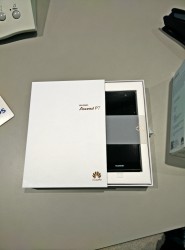
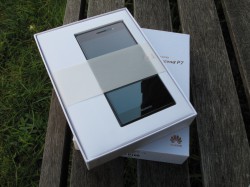
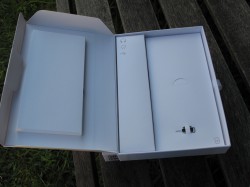

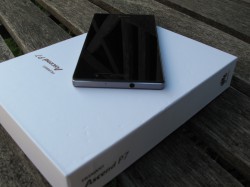
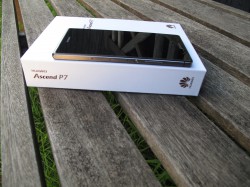
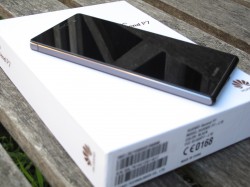





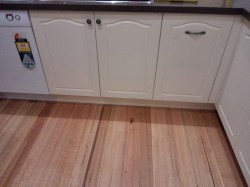
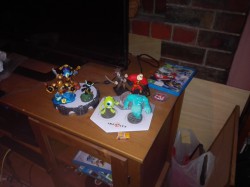
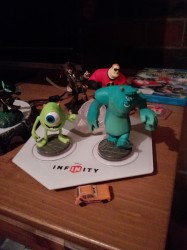



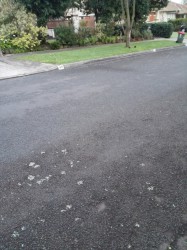
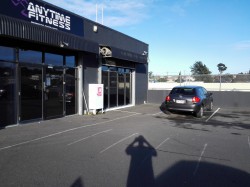
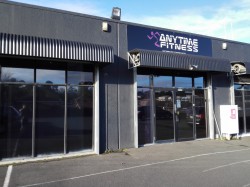
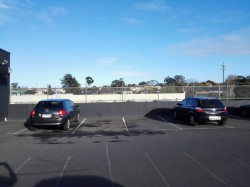



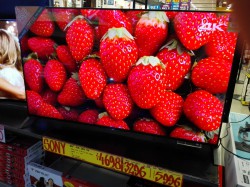
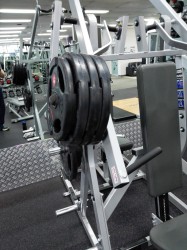
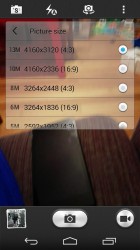
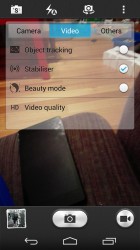
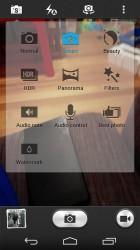



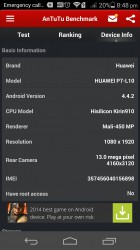
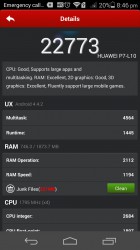
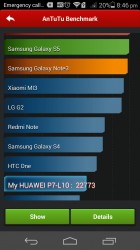

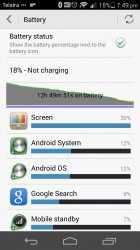
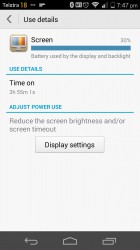

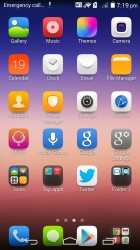
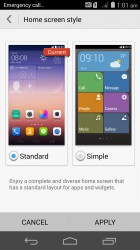
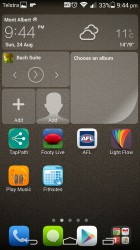
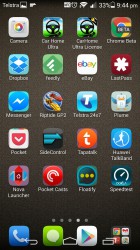
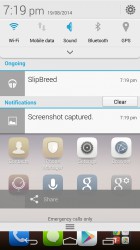
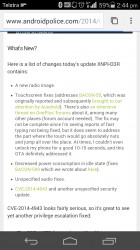

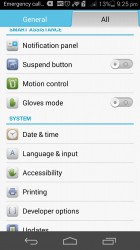
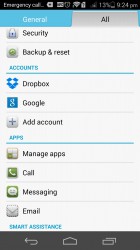
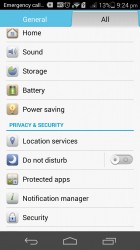
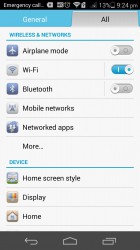
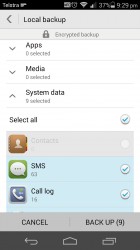
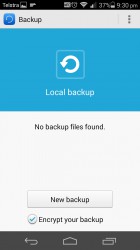

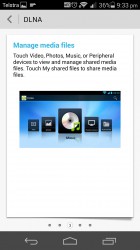

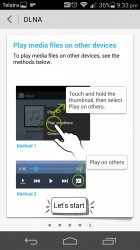
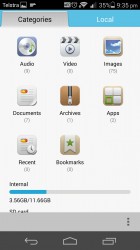
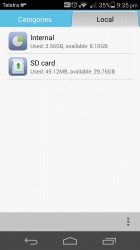
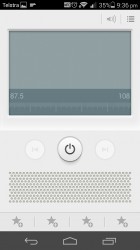
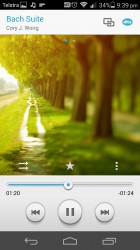

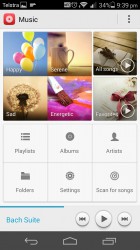
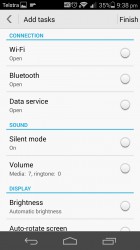
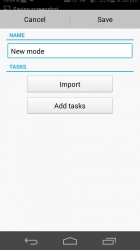
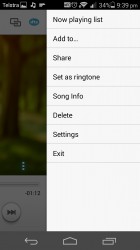
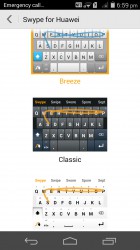
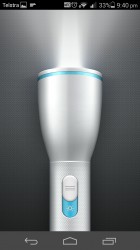


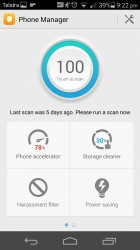

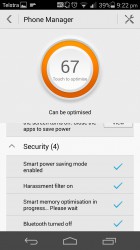
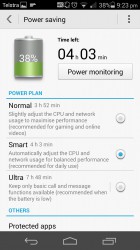
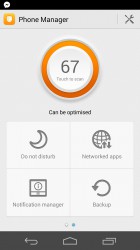

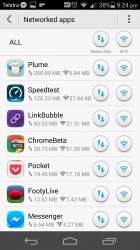
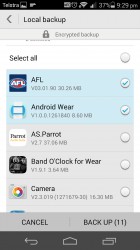

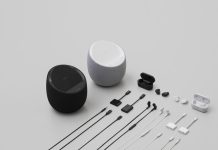
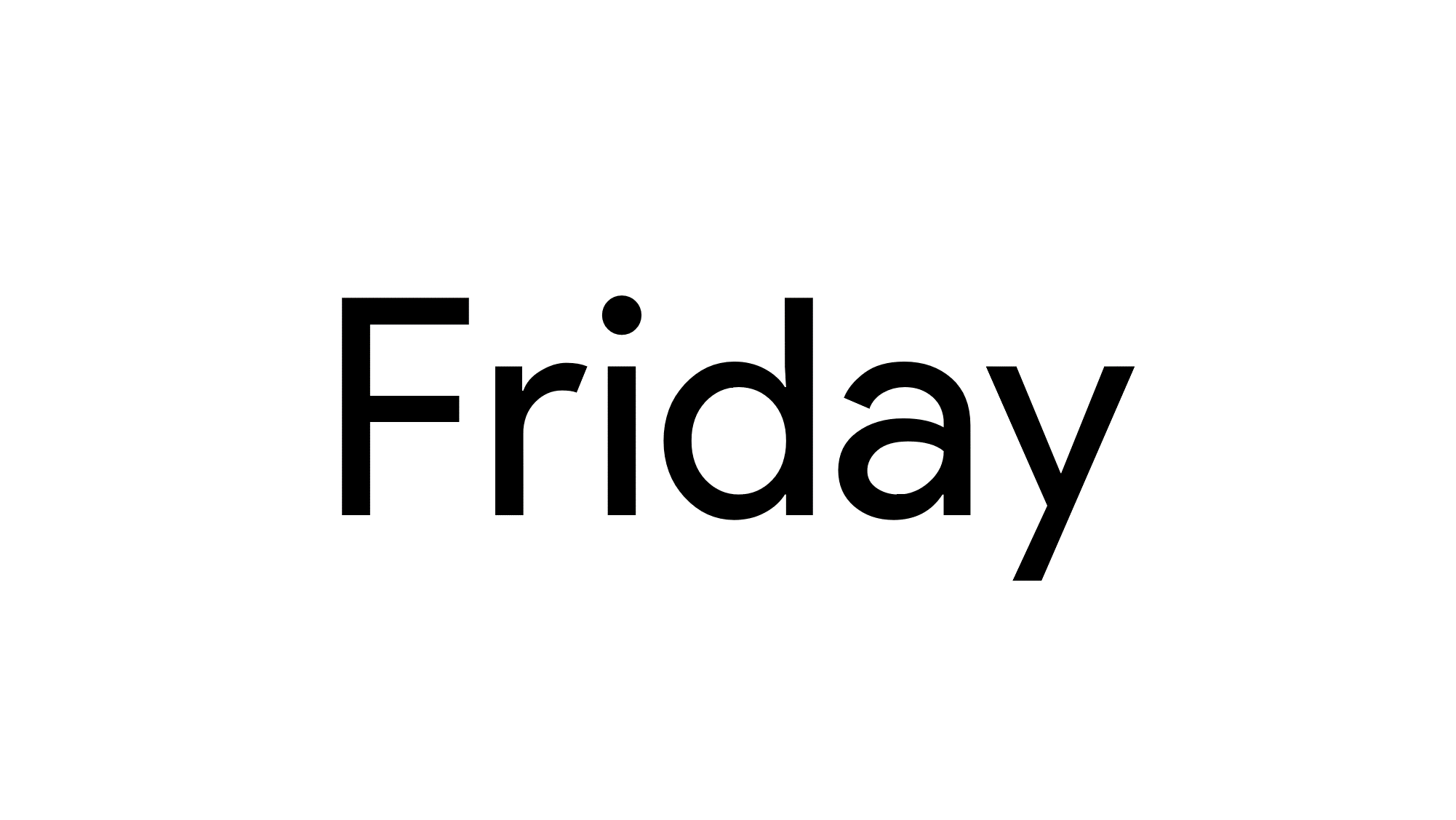
This device from Huawei sounds interesting as an attempt to do a mid level device.
The battery life is not what I’d call ‘good’, much less ‘acceptable’, as I feel a brand new device now days should be able to manage a full 6am to 9pm day.
16GB on KK is no where near enough internal storage.
Missing from the review, maximum size of microSD card supported.
Sorry Jeni. Must have missed that. It’ll take 64gb.
The battery life had no issues lasting from 6am until 9pm most days with extensive use. For me that is good. I was using it a lot to test it too. .
Thanks for that info Scott
🙂
I’m sick of people saying 5” phones are now small or smaller phones. They are still BIG as far as I’m concerned.
If we start having more 6.5″ or 7″ phones does that suddenly make the N6 @ 5.9″ small?
You what?
Sent from my Galaxy Mega 6.3
😉 j/k agreed.
I’m sick of people saying 5” phones are now small or smaller phones. They are still BIG as far as I’m concerned.